Over the years, quality menswear from famous brands has declined, and such change is evident in other areas of consumer goods, as well. Today, we’ll discuss how the downturn in menswear and the larger fashion industry transpired, what you can do about it, what quality is, and why it still matters on so many levels.
- History of The Decline In Quality Menswear: The Mid-19th Century
- The Industrial Revolution
- The Machine Age
- Post-Industrialization
- The Beginning of “Fast Fashion”
- Globalization and The Digital Age
- Menswear Today
- Acceleration of Fast-Fashion
- Understanding Quality Menswear
- Potential Bright Spots in Today’s Consumer Landscape
- Choosing Quality Menswear
- 1. Determine Your Personal Style
- 2. Determine What You Frequently Wear & What Fits Well
- 3. Learn What Constitutes Quality
- 4. Read Labels & Seek Out Natural Materials
- 5. Save Up for Versatile Pieces
- 6. Consider Cost-per-Wear
- 7. Evaluate The Entire Customer Experience
- 8. Take Care of Your Clothes
- Outfit Rundown
The answer to why the average clothes today are of less high-quality than they were 40 or 50 years ago is complicated and manifold. But, it involves elements such as the change in consumer tastes, free trade agreements, and the popularization of artificial fibers.
It also involves the mass offshoring of manufacturing, discounting as a marketing strategy, and the creation of the internet. Of course, with the constant pressure of shareholder profits paired with price targeting and an increase in seasons, we see a decline in quality overall. We could also mention the throwaway culture or many other influences. It’s not just one thing, but it’s a compilation of everything.
The short answer could be the market has replied to the different demands of the consumer. And so, no one is really to blame, and at the same, time everyone is.
History of The Decline In Quality Menswear: The Mid-19th Century
Even though the last 30 years have seen an acceleration in the decline of quality, if you take a look at history, it dates further back and starts in the mid-19th century.
Before the industrial revolution, fabrics were mainly made out of natural materials. Fabric was a rare good that existed in limited quantities. It was all made-by-hand, and the clothes were made-by-hand as well. Labor was, of course, cheap. So, a majority of the price in a garment was comprised of the fabric.

If you think about it, you had to get a pure fiber that was then hand-spun into yarn and was then hand-woven. This was how you get fabric, and you had to make the fabric into clothes. And because there were no factories and machines, tailors sew clothes by hand. So, this apparent resource-intensity of clothing made them, in general, rather expensive.
Because of that, only rich people could afford more than the mere necessities of clothing. Of course, we go back and look at paintings of people; typically, they were rich people, so there were lots of nice fancy clothes.
The Industrial Revolution
After the industrial revolution, mass production of thread, fabric, and clothing helped to slowly bring down the cost of clothing to the average person. Materials were still somewhat limited to what could be harvested, and fabric finishing processes and the whole factory manufacturing process weren’t as refined and efficient as today, where things are vertically integrated. You can produce a top-quality fabric at a really low price compared to what was possible 100 years ago.
So, even though efficiencies increased and manufacturing costs went down, the material cost was still relatively high.

It wasn’t until the 20th century that man-made fibers were really popularized. In 1910, Rayon was probably the first artificial fiber that was widely recognized. Finally, the market now had a better grip on handling the cost of manufacturing production and the materials that went into clothing.
Of course, two World Wars were at the top of mind for many people, and so were the resources. It wasn’t until after World War II that optimized manufacturing had a big impact on the clothing market.
The Machine Age
In 1940, the daily attire for men consisted of a suit. At the time, the cost of clothing for men was higher than for women. At the same time, men required less variety and, therefore, the cost was about the same. On top of that, clothes were also worn for much longer, which was easier on the wallet.
The average price for a suit back then was about $50, which, in today’s money, would be around $917. That’s just the average. Of course, you can buy suits today that are a lot more expensive, but you can also find suits south of $100 in this day and age.

Most of the clothing Joe Average wore was produced in the US, and Americans spent 12% of their household income on clothing. Shopping was mostly local or maybe used a catalog. But, it was mostly focused on what was immediately available around you.
At this time, a man bought a suit on average about every 24 months. So, in a nutshell, during the middle of the 20th century, men-owned fewer clothes, they spent more on those clothes relative to their income, and they wouldn’t buy new ones as often as we do today.
Post-Industrialization
During the 1950s and 60s, artificial fibers in clothing became really popular. And so, you saw polyester, spandex, and acrylic or nylon pop-up. All these fibers, which heavily influenced fashion in the years to come, slowly helped reduce the cost of clothing. They also introduced a stretchy characteristic to fabrics that were unknown from cotton yarn or wool yarn beforehand.
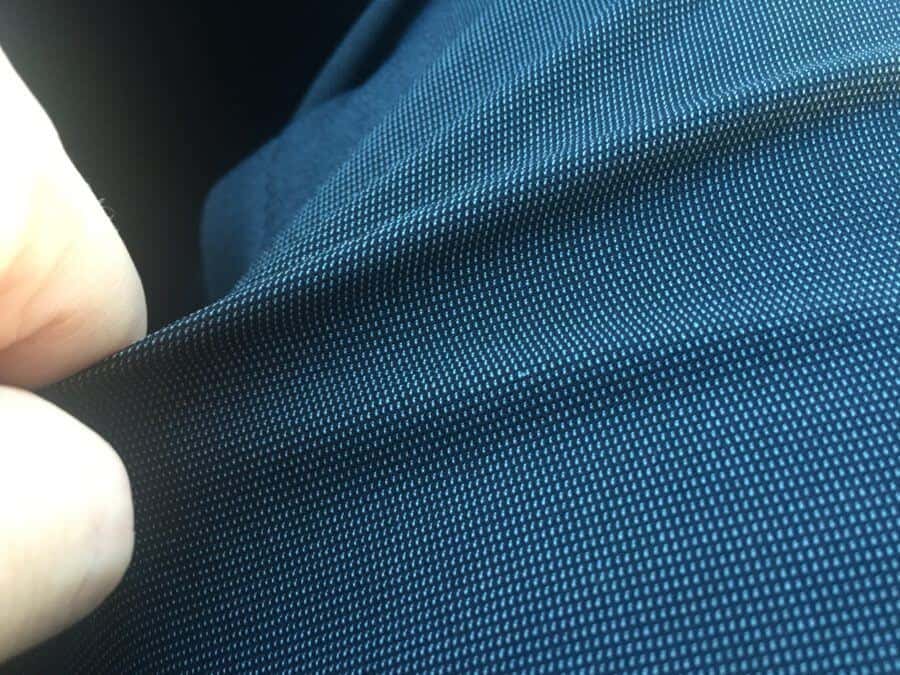
Still, in the 60s, 95% of all the clothing consumed in the US was made in the US. Starting in the 70s, huge textile mills popped up in low-cost countries, and they allowed the manufacturing of materials at a fraction of the cost of what you could do in the US. This led to the outsourcing of manufacturing.
The Beginning of “Fast Fashion”
In 1975, Zara opened in Spain. At a core, it offered low-priced look-alikes of higher-end fashion brands. In other words, the common person was now able to afford something that looked like what the rich people wore just for less. This concept was really popular, but Zara kept innovating, lowering lead times, and reacting more quickly to changing fashion trends. Basically, what we had here was fast fashion emerging for the first time.

By the mid-1980s, mass retailers like Gap or JC Penney had moved the majority of their clothes manufacturing offshore, and the focus was more on quantity rather than quality. The shift often coincided with brands going public because shareholders wanted more profits and dividends. Brands also discovered that they could sell more volume at lower prices, so they went into lower price segments, and the competition heated up.
Globalization and The Digital Age
In the mid-90s, NAFTA reduced the cost of duties for clothing, which furthermore reduced the barrier to offshoring. That meant American retailers and brands doubled down on cheap overseas production. Around the same time, the internet became accessible to the average man. And by the time the millennium rolled around, e-commerce was already established.
Suddenly, the market a person could shop in went from just locally to basically worldwide. New brands popped up, which sold their goods directly to the consumer, thus, cutting out the middlemen and reducing costs. Classic haberdasheries and menswear purveyors had, often, difficulties keeping up with the changing times.

Traditional retailers started to realize that, most of the time, they would only have two to three months for their fall-winter and spring-summer stock to lay on the shelves before it had to be heavily discounted. So, they came up with the concept of a resort season and a pre-fall season, which could be sold for longer periods of time. But, that made an even quicker pace, a higher turnaround, and even less of a focus on quality.
Menswear Today
Today, the average person in the US spends about 3% of their available income on clothing, which is the lowest it has ever been. At the same time, Americans buy five times more clothes than they did in 1980.
So, how is it possible that we reduce the cost of goods fourfold, but we increase the quantity fivefold? Well, a study in 2015 showed that the average garment is only worn about seven times.
So, if you need something that lasts seven times, why focus on quality at all? It’s really just about quantity and the newness of it. In fact, today, only 2% of the clothing consumed in the US is manufactured here.
The consequence is that the textile industry as a whole has all but vanished. While the old advertising channels still exist, we now have online publisher ads, google search ads, and social media ads. And also, we have seemingly normal influencers that can build a whole lifestyle around a product. So, it’s no longer just a brand that says, “Here’s our product. It is awesome. Go buy it.” People can see it in action, and they can trust people when they see them, or so they think.
Acceleration of Fast-Fashion
Despite the shift in the production of quality menswear, many brands such as Brooks Brothers or Ralph Lauren benefit from the perception that they sell only high-quality goods. Still, even they have been part of the race to lower the quality.
We’ve already seen this happening with brands such as Abercrombie & Fitch, which started originally as a supplier of sturdy sporting and hunting outfits. It hasn’t been considered a serious clothing brand in the US since the 90s when the focus had shifted to teenagers and t-shirts. Today, it’s anonymous with a washed-up, teen-style trend machine that sells overpriced t-shirts, bold colognes and has borderline-pornographic ad campaigns.

On the flip side, fast fashion brands have become one of the biggest players in the international clothing market. There’s something new every time you walk into the store, thus fueling the demand.
Today, most consumers spend less than their grandparents did. Generally, as consumers, we’re now hooked on low prices and a constant influx of new styles and clothes. The inevitable result is that retailers or brands produce what they can sell. And if they can sell more cheap stuff, where quality doesn’t matter, that’s exactly what they’re gonna do.
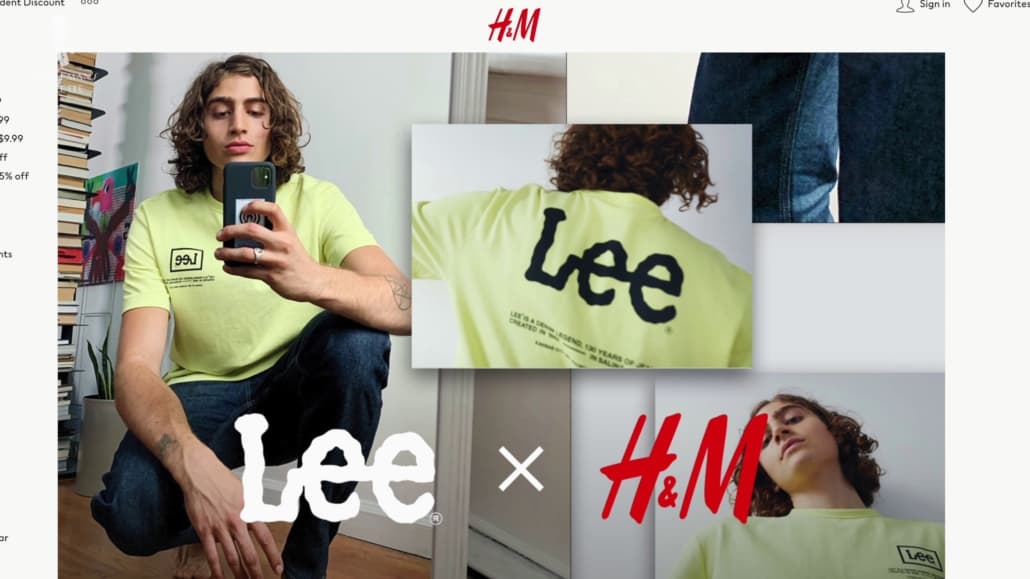
Overall, one could argue that the clothing industry is in a pretty sorry state. And as a clotheshorse and quality lover like myself, that is a hard pill to swallow.
So, does that mean that quality today is dead? Personally, I firmly believe it isn’t.
Understanding Quality Menswear
Essentially, quality is “the standard of something higher than other goods of the same kind” or “the degree of excellence of something.” So, in short, it’s thought through to a better degree, manufactured in a smarter, more purposeful way that uses more high-quality ingredients, and something that outlasts other things of a similar nature.
For example, a skinny pair of fine dress socks made of high-quality, two-ply cotton with a long-staple length will probably not last as long as your white pair of tennis socks, which is made out of a blend of single-ply, short-staple cotton, and artificial fibers.
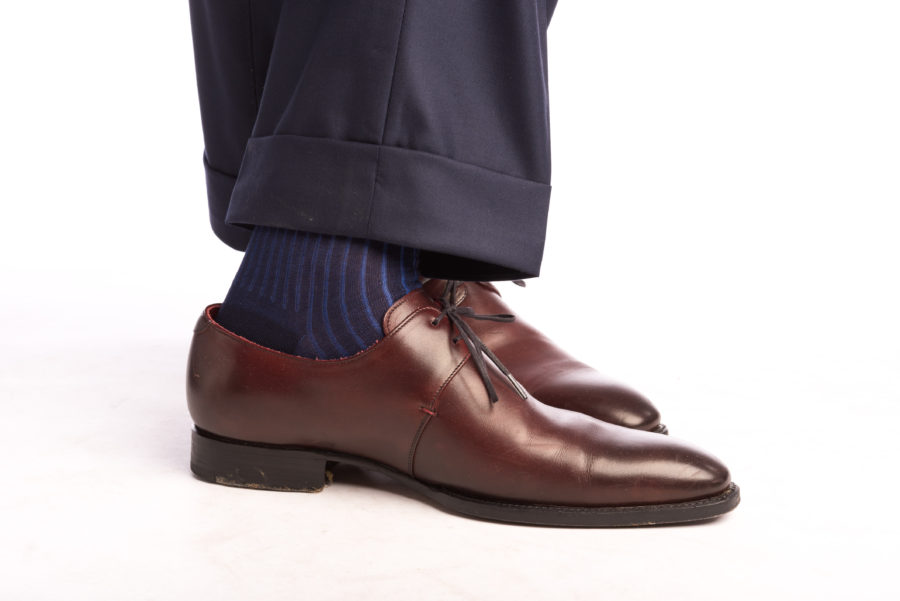
So, why is that? Well, because the tennis sock is simply much much thicker. Does the fine dress sock feel better on your skin? Will it be more breathable? Will you overheat less? And will it look better? Absolutely. But, it won’t last as long. You always have to compare apples to apples.
So, for socks, if you have two socks made of the same thickness. The one pair that is made out of two-ply, long-staple cotton will outlast the single-ply, short-sail cotton one for sure. In fact, cheap cotton is so bad that you couldn’t even make really fine, thin dress socks with it because they wouldn’t last at all. To better spot quality in men’s socks, our $4 Socks vs $40 Socks comparison has you covered.

In today’s marketplace, the term “quality” is often misused. Why? Well, stores have realized if they mention “quality,” they’re more likely to get the sale. In my mind, it’s crazy that it works so easily without even asking “why.” Why is something quality, and why does it matter? This is something we love to do at the Gentleman’s Gazette, and we put it into practice in our series “Is It Worth It?”, where we review iconic products of often high prices and see if they’re really worth your money or not.
Potential Bright Spots in Today’s Consumer Landscape
Even though the market, in general, seems to be moving in the direction of cheaper and faster, the internet has allowed like-minded peers to connect. And, personally, I find that there has been a resurgence in the quality of smaller, very focused brands that truly believe in higher-end goods. These individuals don’t just believe in quality but also in a purposefully-built wardrobe.
For example, a capsule allows you to always have something to wear and have items that are classic that can be combined with all the other things in your closet. Having pieces that don’t need to be replaced all the time and having pieces that are versatile will reduce your cost per wear in the long term.
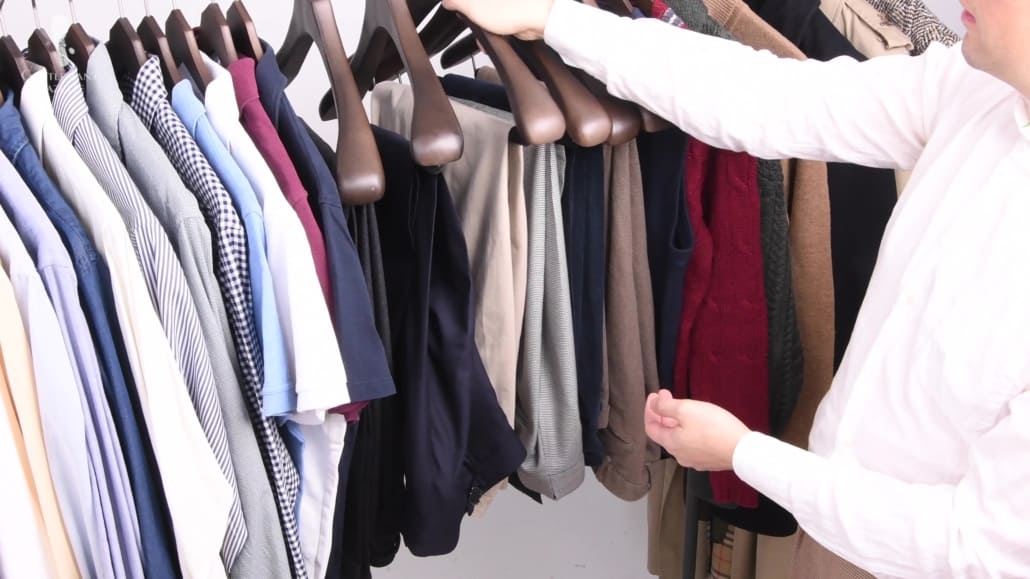
Because of that, you can afford to spend more on individual items, which means you get something that is produced in a better way, made out of more high-quality materials that feel better and fit better. It’s also less likely to go out of style, and it is environmentally a lot more responsible and sustainable, and eco-friendly. How so? By choosing a timeless wardrobe that has to be replaced less often, you are by definition greener, ecologically-responsible, and sustainable.
Also, if you dig a bit deeper and ask yourself truly and honestly, “Why do I always want something new?” The answer probably is because you’re not satisfied with what you have. By focusing on quality and classic style, you will automatically shift your focus from “what I want that makes me feel good at the moment” to “what’s actually best for me in the long term.”

So, at this point, you may ask yourself, “What can I do about this?” And let me be clear, I’m not here to doom and gloom the clothing industry. I’d rather take this as a chance to look at the current state of the clothing industry and its potential for change and refocus on what really matters.
If I browse the internet today, I find almost more high-quality brands than I did 20 years ago. And the premise of Fort Belvedere, our own brand, has always been to produce high-quality items that are made by craftsmen, that stand the test of time, and that don’t cost an arm and a leg.
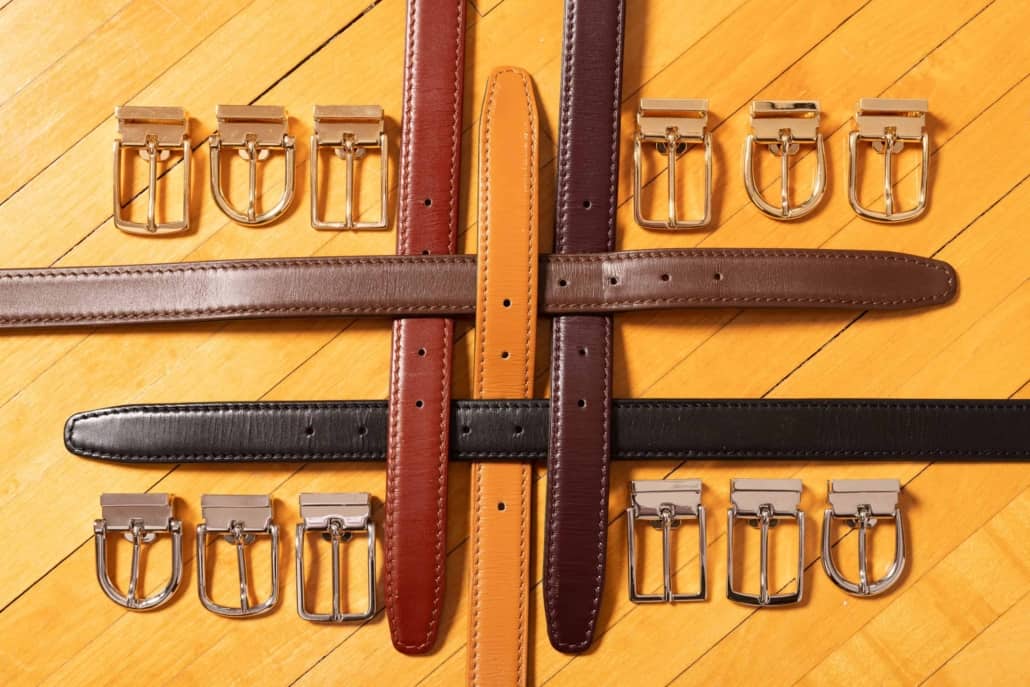
So, will high quality cost more than something from a fast-fashion house? Absolutely. At the same time, when we design a product, we always start with a quality level we want to achieve and then assign a price to it. We never have a price target and try to hit that and then lower the quality. That’s just not who we are, and that’s not what we want to produce.
Choosing Quality Menswear
It’s a fact that it is more difficult to opt for quality over quantity because, generally, it is more expensive. But, what can you do about it? Here are our tips:
1. Determine Your Personal Style
The first thing you want to do is figure out a style that works for you that is independent of fashion trends and independent of what’s going on in the moment, but something really works for you.
For example, I have big thighs. So, I’m not going to wear skinny pants because they look ridiculous on me. Instead, I always wear double-pleated pants, no matter whether it’s trendy right now or not. It’s because I like it and it works for my body type.
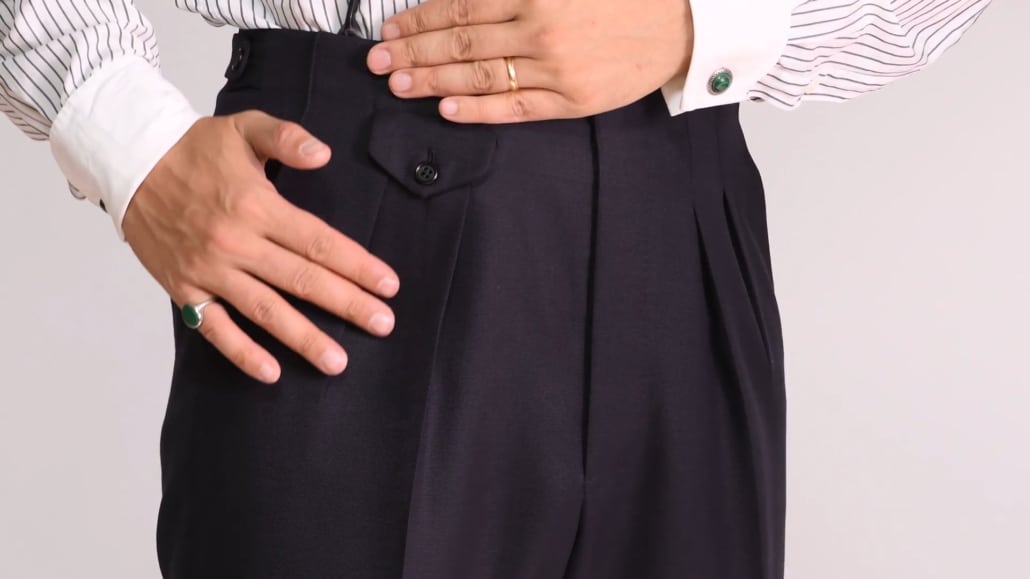
There’s no right or wrong here. You just have to ask yourself the question: “What do I generally feel good in?” Personally, I love the feel of a nice shirt, jacket, cardigan, or pants on my skin. I also like the look of it and how it makes me feel.
2. Determine What You Frequently Wear & What Fits Well
Ask yourself: “What do I wear over and over again?” Is it corduroys? Is it denim? Is it sneakers? And ask: “What fits me well regardless of style or trends?”
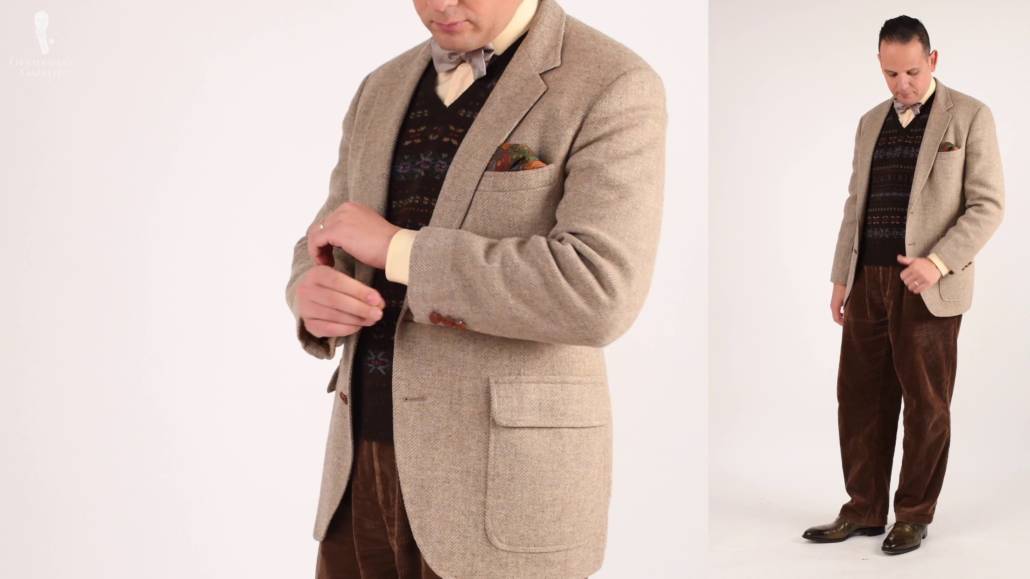
3. Learn What Constitutes Quality
Obviously, the problem is you don’t know what you don’t know. And, sometimes, even so-called half-knowledge can be dangerous. When I read sometimes that only aniline or non-chromium tanned leather is best, I want to scream and say, “No! Not necessarily!” Yes, the majority of chromed tanned leather is cheap. But, there is also extremely high-quality chrome-tanned leather.
At the end of the day, if you can’t tell crap from the quality and you don’t know what quality constitutes, you have to rely on other factors such as the retail price or the purchase price, the packaging, the environment you’re buying it in, or other factors that are not really about the product.

On the flip side, if you know your materials, you know their pros and their cons, you know different construction techniques, you know what leather works better for certain purposes, you can be a lot more intentional and make much smarter buying decisions that actually suit your needs and wants.
Fortunately, because of the internet, there are lots of sources of information. It’s not always good information. But, once you seek out people you like, and you’ve verified, and you can trust them, it’s a wonderful source to find experts in various niches. I’d even go so far as to say that almost every content we have on the Gentleman’s Gazette has some element of education about quality.
Yes, you have to be cautious. Should you trust all the Amazon reviews or a site that is just full of affiliate links? Probably not. Tons of review sites out there actually have never really tested a product. So, if someone just has a picture on a white background versus someone else who had an entire video showing you how they tested it, what their conclusion was, I know who I would trust more.
4. Read Labels & Seek Out Natural Materials
The next thing you can do is actually look at the labels and try to generally go for more natural materials rather than, let’s say, polyester. Why? Well, generally, natural fibers are more sustainable. Of course, it depends on the individual fiber, how it’s grown and harvested, but that’s just an overall thing.
For example, cotton uses a lot of water, and it’s not ideal, but things like linen or flax or wool are fantastic, more sustainably produced natural fibers.
Of course, there are always limits to it. Let’s say you go mountain climbing or skiing. Yes, you want a GORE-TEX membrane with a sturdy nylon shell. There’s nothing wrong with it. That stuff is breathable, it’s technical, and it’s really nice.

For a classical men’s wardrobe, though, it’s just overkill, and you don’t need them. Also, I found that a nice, heavy woolen overcoat keeps me just as warm and dry as a shell with multiple layers underneath it that I can wear when I snowboard.
When you work out at a gym and sweat a lot, a 100% cotton t-shirt is not ideal because it soaks up all your sweat, and it doesn’t keep you dry.
That being said, not all artificial fibers are being created equal, and things like nylon, sometimes, can actually have a benefit. Whereas polyester is typically only used to make things cheaper, and if you have something with polyester, it won’t be cleaned as easily, and it will look older much more quickly. So, if you read polyester on your label, typically, I would stay clear of it.
Nylon, on the other hand, can be good. It can be more moisture-wicking. It can last longer than cotton. And there are even subgroups such as Tactel or Tencel and so forth, and they’re all interesting fibers. You should learn what they’re made for, what they’re good for, and some are softer than others, and others are sturdier. So, just educate yourself and know what you buy.
5. Save Up for Versatile Pieces
Save up for something that you truly want that truly fits a gap in your wardrobe rather than just buying the next best thing on sale. In a nutshell, buy less, spend more on individual pieces of clothing that you can then enjoy for longer.
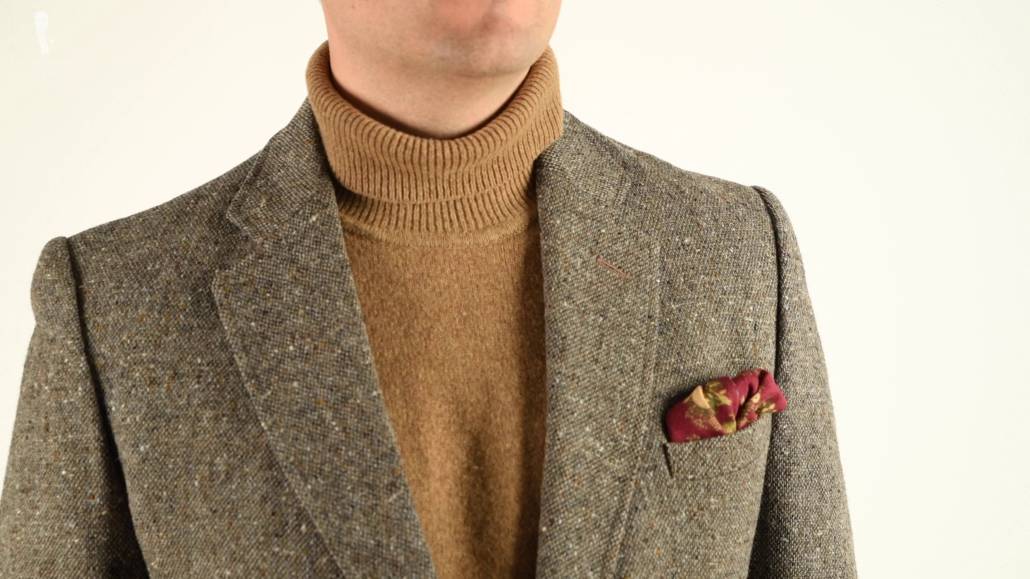
I know it’s really hard sometimes, but the quality is enjoyed long after the price has been forgotten.
6. Consider Cost-per-Wear
If you have a hard time rationalizing it in your head, we’ve said it time and time again, look at the cost per wear. For example, if you buy a jacket in H&M that you wear only 20 times, the cost per wear is $5.
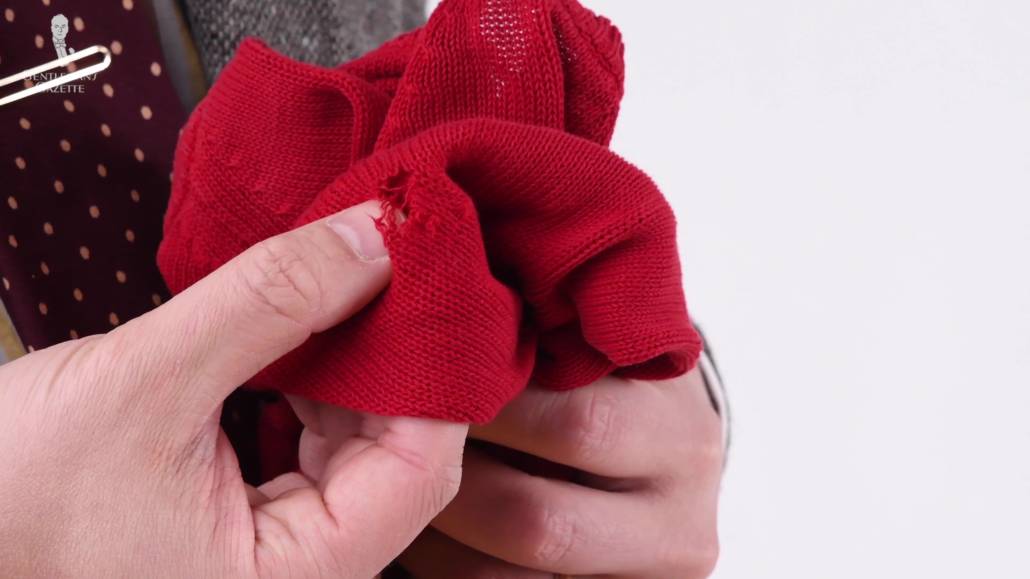
On the flip side, if you buy a high-quality jacket for $1500, but you wear it about once a week for ten years, now your cost is just $2.88 per wear. Obviously, that’s an extreme example. But, I hope you get the point.
7. Evaluate The Entire Customer Experience
Also, when you buy something, don’t just necessarily look at the quality of the product. But, look at the quality of the education that comes with it, look at the quality of the customer service.
For example, we work a lot with natural materials, and sometimes a fine leather skin will rip, and we understand that, but we also know that it generally doesn’t. And if it happens, we’ll just replace the thing for the customer. If we do things wrong, we’re there for them, and we stand behind our products because we believe in them. That’s not necessarily something you get when you just buy at the next best platform.
Can Little Money Buy Quality?
The big question I always get is: “Well, what can I do when I want to buy quality, but I can’t afford it?” And, again, I said it. You can save up for it. And if that’s not an option or if it’s just not within your budget, that’s okay.
If you’re a regular viewer of the Gentleman’s Gazette, you already know that we’re big fans of quality vintage clothing, and you can go that route. It’s really a great way to start a quality-inspired mindset, and that’s the way I started my journey in classic menswear. It was all vintage.
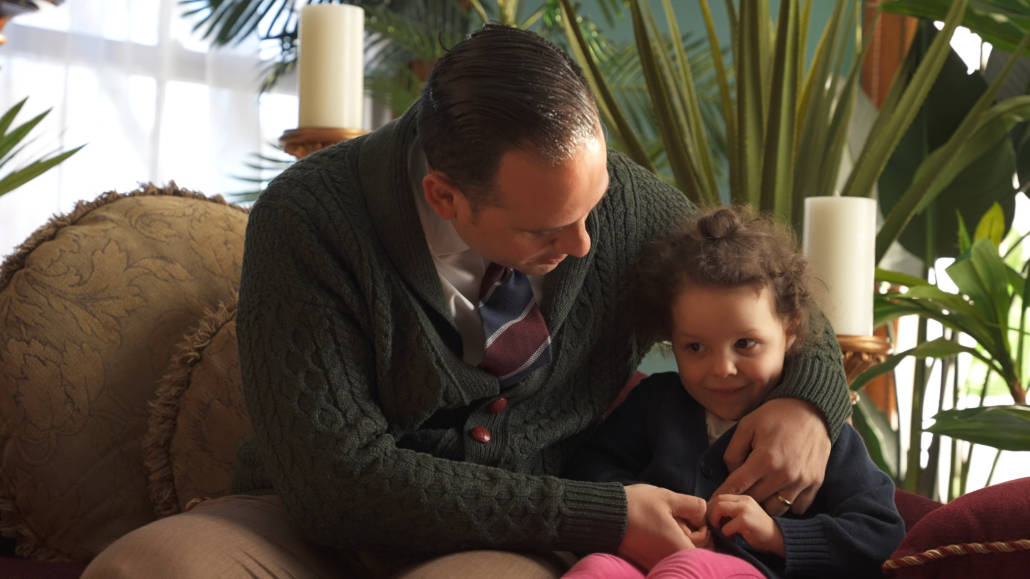
Even today, I still enjoy buying vintage things because I believe in the sense of them and quality. And if I buy something that’s already produced, I’m not utilizing additional resources just to make it new. Of course, the problem is: sometimes, the most sought-after vintage items are only available once, and stuff you don’t want is available over and over again.
In my case, I try to instill this quality-mindset in my daughter. So, I started her young. She loves to wear cardigans just like I do, for example.
Learn these 10 signs of low-quality clothing
8. Take Care of Your Clothes
Last but not least, one thing you can always do is to take care of your existing clothes because they will elongate their lifespan. Whether that’s just letting your shoes rest, not wear them every day, or brushing out your clothes, there are lots of little things that you can do to maintain your wardrobe and enjoy wearing them for longer.
Outfit Rundown
I’m wearing a vintage tweed-like jacket made of 100% wool in a medium gray diagonal stripe. It has nice flat patch pockets and a few additional details such as pleats in the back. I bought it vintage for a few bucks just like my pair of pants, which is from Ralph Lauren., and it’s made out of cotton and has this kind of fine, brown, two-tone herringbone-like structure. My white shirt is a classic that I had custom-made for me out of a nice fabric so it will last for years to come. My tie is a mohair wool and silk grenadine from Fort Belvedere that is untipped. It’s super soft and very different from your typical striped silk tie. My pocket square picks up the burgundy red of my tie and has blue pink and green paisleys.
It’s a silk and wool blend from Fort Belvedere. And I like it because it’s not shiny as silk and it works well with a matte tie, shirt, and jacket. Likewise, to keep with my color scheme, I wore a pair of burgundy and white Fort Belvedere over-the-calf socks. They contrast with the pants as well as the blue suede boots, which have red shoelaces, which again work well with the tie I’m wearing.
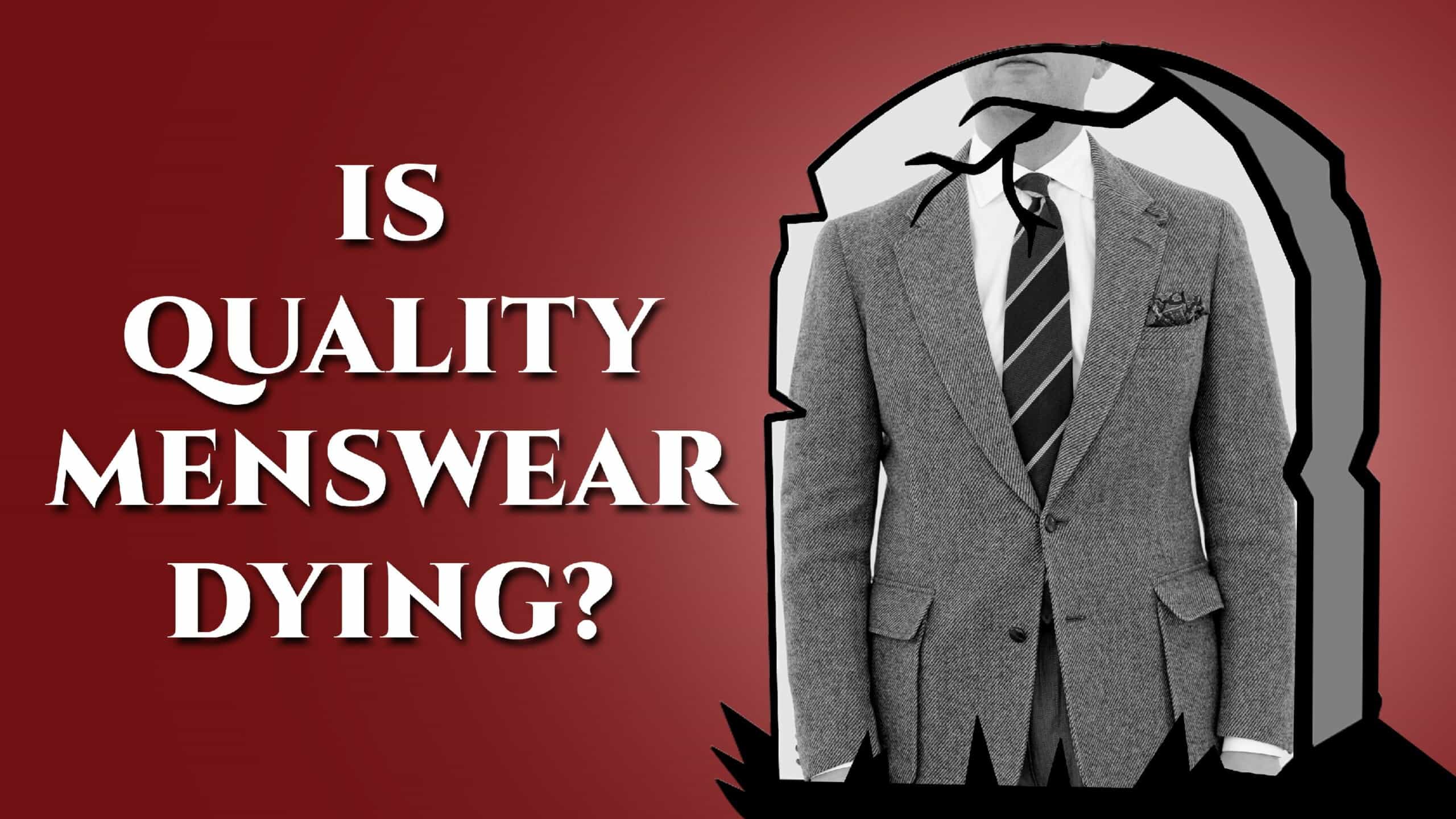





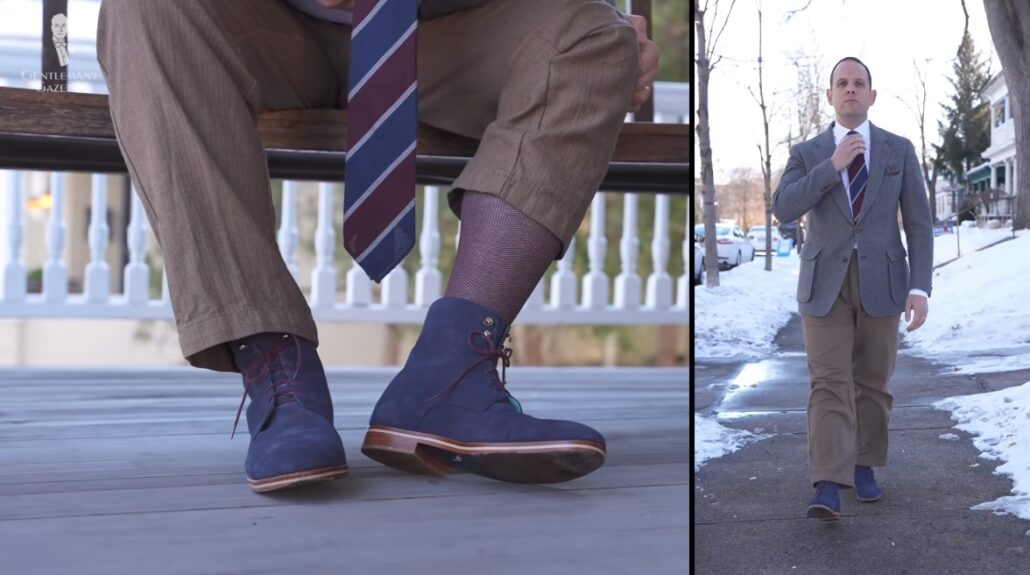
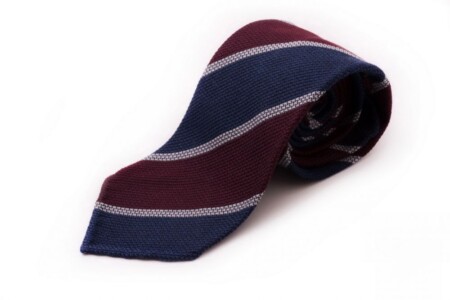
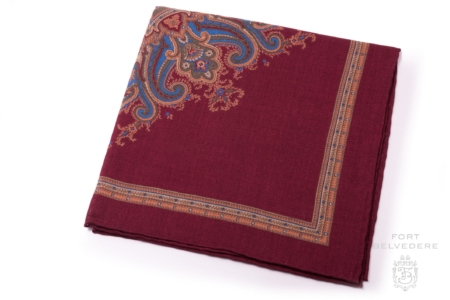
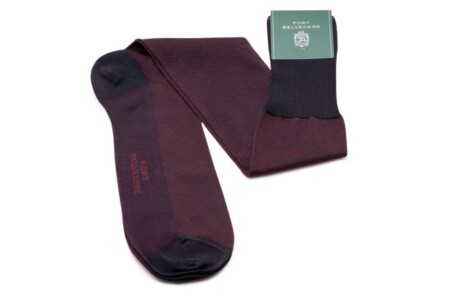
Great article on a very important theme, thank you!
We can no longer exploit our world and the people who produce our stuff as we are.
Over the years I bought clothes from European brands with a responsible mission (Santoni, Eton, Corneliani, Paul&Shark, …) and focus on quality in make and materials. I hardly ever need to throw something away, rather I have it repaired or I resell/pass it on.
Indeed these are more expensive to buy, but enjoyed for so much longer that they return good “cost per wear”.
Thank you and please keep tips coming!
Peter
This is on point, Peter. Glad you liked the video! :)
Great article. How true you are.I am always looking at second hand stores for vintage clothes and shoes.more fun can be had in the chase than the actual buying.I great buy is a treasure. I recycle all my clothes and shoes.
Well, pretty familiar with the whole thing and have noticed as time goes by the decline in people’s perception of what quality means today verse us “old timers” who grew up when most everything was of much higher quality than today.
My friends generally still wear suits at meetings we have in common(now Zoom but still wearing suits). There is a traveling men’s wear show called “FineLine” that sells suits, etc at extremely low prices while claiming high quality fabrics such as “Super120’s up to Super 150’s” on their suit fabric labels. They sell their suits for $89.95 each. Started to discuss the subject stating “How can a suit that price be anything but very poor quality?” Let’s just say I will never bring up that topic again! Ridiculous arguments followed. No concept at all of quality suits. Frustrating trying to educate anyone about anything these days. JD
The value of quality clothes goes way beyond cost-per-wear.
I’ve learned women pay close attention to how a man dresses and judges his mate-worthiness accordingly. While men in their twenties and physical prime can get away with dressing sloppily, men over thirty cannot. Given that, men of a certain age can dramatically improve their changes for romance by wearing high quality and tasteful garments and shoes. How to tell if you’re doing it right? If you’re not getting compliments regularly from women on your dress, you need to re-evaluate and upgrade your sartorial game.
You speak truth my friend. I once wore kilt with full regalia for formal night on a cruise. The women were holding the elevators for me and full of ready conversation — never mind their men folk.
If Sven will allow me…
Young lady to Scottish man wearing a kilt: “Is anything worn under it?”
Scottish Man: “No, lassie. It’s as good as it ever was!”
Let thevwind blow high, let the wind blow low. Down the street in my kilt I’ll go. All the lassies say “Hello, Donald where’s your troosers?”
I think in today’s trends is that “simple” is the best. Because most men do not want to take the time to “dress up” they rather hurry up and dress for any ocassion then to think about how they really look. Years ago men went out on a dinner date wearing a suit or a nice coat and tie to go out, in fact alot of nice restrurants would not let you in without a tie or coat. It also made to take the time to figure out what made you look good for that date or outing,but now sad to say that does not happend most of the time. Now, its”just throw it on” and if it looks ok then its out the door i go!!. However it is nice to see a man and a women who are both wearing something that really looks like they took the time to dress for that outing or dinner date! Guys, please wear something that will inspire your wife or your date “to say, i am proud to be with him” It also saids something about yourself in how you dress and act!
Sounds about right. I also get the impression that there’s a growing culture of laziness where most men seem to prefer to pick one outfit and stay in it all day regardless of it’s appropriate for the occasion or venue they’re going to. A couple of years ago, I went to this murder mystery show and dinner at Kryal Castle in rural Victoria. While most attendees had smart casual (neat jeans, chinos, dress slacks or for women, dress or skirt and shirt) and even 2 years on, I remember being appalled to see one man dressed in board shorts, hoodie, baseball cap and thongs especially as his girlfriend or spouse had made an effort and was dressed like she was going to Melbourne’s Spring Racing Carnival. And this was during winter, too! As much as it sounds judgemental (and catty like the way I hear women go on) it makes me wonder how he dresses for work and if it’s how he dresses all the time, what his attitude is like to things like his job.
If not the above, they seem to pick the first thing that’s vaguely appropriate to the event and doesn’t violate the dress code. Eg. For smart casual, wearing black or navy dress pants and white shirt. An improvement over the above example but not great as it gives off that waiter/retail staff vibe but as you say, it looks like they’ve just thrown it on and decided it looks okay so out the door they go.
As for venues, well I honestly can’t think of a single place nowadays in Australia that really stipulates that level of formality. At the most, they’ll prohibit thongs, singlets and maybe gym or soiled work clothes. Eg. Someone coming into a place straight off a construction site.
Great article. I remember when I used to buy dress shoes for less than $100 that I threw away after maybe a year of wear. Then I bought a $300 pair of quality dress shoes. While paying that much initially stung, I’m glad I did. 8 years later I’m still wearing them and they still look great!
Many excellent points, though not all that I hoped for, when I received the email. I wish the dive had gone a bit deeper!
The concept of buying quality, even if it requires buying less, due to financial constraints, is absolutely sound advice. While it may limit dressing choices in the short term, over the long haul, one winds up with a well-rounded closet, which allows a vast range of possibilities. There are so many items for which this is true.
Much of my footwear wardrobe is double digits in age. It is, primarily, Crockett & Jones, Allen Edmonds, Zella, and a few J&M pairs. The oldest are 25 plus. The majority are 15-20 years old, but don’t look it. Why? Quality products, disciplined use of cedar trees, and fanatical polishing, on a regular basis. To one of your best points, what is the cost per wearing on 25 year old shoes, which look far better than 95% of the shoes I see on other men.
BTW, a slight quibble – oak tanned leather is far superior to that produced other ways; although, I have many fine pairs that are aniline or chromium. They are wonderful, but are not the pinnacle. I have found that particularly true with regard to durability of the soles.
This one example can be repeated with respect to knitwear, shirts, and tailored clothing. Buying classic pieces, which are well made, employing timeless, “old school” methods, and constructed using world class fabrics, is a recipe for a life of daily delight, with minimal cost per wearing, which becomes important, because it, inevitably, leads to necessary, significant investment in closet expansion projects!!!
Oak tanned leather is used for the heel, the sole, the insole etc, but never for uppers. So no you cannot just make a pair of shoes of oak tanned leather.
Thanks for this article. Well done. Great subject. I really do think that there will always be a place for “real” quality clothes. As for watches, people notice great quality!
I am a bit long in the tooth and remember, as a schoolchild, receiving instruction as to how to air out my clothing overnight so it could be worn the next day . . . and the next, etc. At the beginning of a new school year, my mother would take me shopping and buy a pair of jeans or two and 2-3 shirts, maybe a pair of shoes (I grew fast and outsized them quickly).
Today, affluent young people have more clothes than you can shake a stick at. They have closets full of clothes and wash them after each wearing. Possibly they experience more wear from washing than from wearing.
I had no idea of what quality men’s wear was about and had to educate myself by reading and purchasing quality pieces online. How many parents teach their children about “buying quality” with regard to anything? Our furniture comes in a box to assemble. Our food comes prepared to cook.
Times change.
Quality menswear will only survive if people are willing pay for it. So, education is key, which this blog is doing an admirable job of.
On point, Steve! :)
It all started with “Casual Friday”
Greetings,
While “Casual Fridays” did nothing to elevate men’s fashion sense, I suggest the erosion of dressing well in the U.S. workplace came earlier, cloaked in good intentions.
With the onset of the “Arab Oil Embargo” of 1973-1974, it was seen as patriotic to adjust thermostats. In my area, Air Conditioning was set to 78F; heat was set to 65F.
Accordingly, my boss told the guys that they could remove their neckties and jackets if we were too warm. That winter, cardigans and sweaters were deemed acceptable professional attire.
I knew guys who kept one tie on their coat rack for occasions on which they would have to appear in court.
This fashion trend led to a redux of the practice of folding one’s shirt collar over the jacket collar, and ties were worn less often.
Everybody became “Disco Danny!”
President Carter appeared in the Oval Office to address the nation about energy conservation wearing a cardigan, casual shirt, and informal tie. Some thought the humble Jimmy Carter had disgraced the dignity of the office by eschewing more formal attire. In fact, candidate Ronald Reagan vowed to return more formal conventions to the White House, if elected.
In the 1980’s popular media culture exacerbated the decline of quality menswear in the United States. “Miami Vice,” a focus on fitness, and “M.T.V.” had impacts on the way American men dressed.
And, after a year of working from home, every day is “Casual Friday!”
Best regards,
Andrew Gregg,
Palm Springs, California
No, it all began with the Australian parliament :) I’m not sure how familiar you are with Australian politicians but among Victorians, Premier Daniel Andrews’ attire has become iconic and for all of the wrong reasons. Case in point – his black North Face jacket, which he often wears to address Victorians:
https://www.dailymail.co.uk/news/article-8537605/Daniel-Andrews-COVID-19-conspiracy-theory-goes-wild-Twitter.html
Even when he dons a suit, I could count the number of times on one hand I’ve seen him wear a tie. Supposedly he’s trying to come across as an approachable ‘every man’s man’ and less stodgy but to me he looks plain sloppy without one.
One way or another, his attire has inspired a lot of mocking and ridicule in Victoria as evidenced by this family’s Daniel Andrews themed party:
https://www.pedestrian.tv/online/family-daniel-andrews-nye-party/
A very good historical summary, Raphael, but the bottom line is that clothing has been driven simply to the lowest common denominator in taste and quality, as have things like construction (particularly home building), furniture, education, automobiles, etc. I like to think sometimes that my clothes closet (in a 285 year old house, which sits on little more than two hand hewn tree trunks) is a sort of Shangri-La where people will rediscover the excellence that once existed in clothing and the superb workmanship of the long-gone skilled tailor.
Unfortunately, we live in the age of the slob. If you don’t believe it, look at what the kids are wearing in any high school or college year book from before the late 60’s.
No arguments from me. Recently I attended a high tea cruise with relatives which stipulated smart casual dress code. The cruise company’s idea of the latter was very elastic: no thongs, tracksuits or singlets. For more than 50% of attendees male and female alike, the most I could say was that they weren’t wearing those aforementioned items. All I can say is that if they consider their attire to be smart casual, I’d hate to think much less see what their casual or sloppy attire (ie. what they’d wear around the house) consists of. Examples of so-called smart casual I saw:
– Athletic shorts, t-shirt, sport socks and sneakers
– Leggings, hoodie with big Puma logo and sneakers
– Board shorts, hoodie, sport socks, sneakers and baseball cap
– Faded jeans with dress-pant type creases ironed in and wrinkly dress shirt untucked
– Cargo pants, sneakers and dress shirt with bomber jacket
– Faded ripped jeans and midriff t-shirt
– Faded jeans and baggy t-shirts with obvious sportswear company logos like Fila, Nike, Adidas
– Shorts, t-shirt, half-zip sweater and sneakers
One of the wait staff wore tiny black shorts, which barely covered their buttocks, with a long sleeve button down shirt.
As you note in the discussion, before fast fashion, people used to own far fewer clothes. 50 years ago as a college student I wore sport coats and slacks or sweaters and jeans; my wife wore the female equivalents. When we moved in together, all of our clothes (including winter coats and our total of 3 pairs of shoes) easily fit in a single 3-foot wide closet.
I’d argue that owning more low quality clothes is a symptom of a growing culture otherwise known as ‘generation now’ ‘throwaway society’ or ‘people of the moment.’ Regardless of what name you use, this culture involves living for instant gratification or the latest and greatest and they have to have or buy it all NOW. Ie. Whatever’s the latest and greatest at a given moment is what the individual values. This culture’s more apparent with technology as evidenced by the way that no sooner the latest phone or device comes out, most of the population is quick to discard what they’ve got (even if it works fine and serves its intended purpose) in favour of the next big thing, especially as these things are becoming more affordable than they were 20 years ago unlike. Clothes and accessories and shoes are no exception: instead of wearing what one has, people in general are quick to buy more (lower quality) clothing when something else takes their fancy often purely because the items are cheap and/or on sale. Some are seemingly too afraid to be seen wearing the same things over and over. They’re also a lot less likely to take care of what they have knowing it’s cheap enough to replace their wardrobe. Altogether resulting in bad habits of hoarding and accumulating a closet of cheap poor quality clothes and shoes.
Excuse me, but we CAN INDEED blame those marketing and fast fashion people for the decline in quality. During the last few decades, the DEMAND for a frequent change of clothing was CREATED, in fact by these big-business salesmen and their advertising industry and in analogy to the previously fastly-changing womenswear industry, alongside with the production’s expansion in lower-wage countries in order to maximise profit and bypass the stricter regulations in production regarding pollution and worker’s rights. Of course, if you’re to change your suits every few months by the foolish dictate of fashion, you will likely not consider comissioning a bespoke garment. Hence, these big business salesmen succeeded destroying the remaining decentralised bespoke tailoring industry.
Before my12th birthday, my father brought me to Barney’s in Manhattan. Those days the salesmen actually UNDERSTOOD men’s fashion and wanted an educated client relationship. I learned how to tell the difference between a quality suit and a cheap product. I came to understand that buying a few great pieces as opposed to a truckload of cheap fly by night fashion, would be a gift to myself that would keep on giving.
I taught my son these values. When he pointed out that the majority of people who understood these principles were few, I replied that those few who do understand could change his life.
My point is, men need to pass on the lessons of fashion to the next generation. It is still the gift that keeps on giving.
This is beautiful, Rico. Thanks for sharing! :)
what is the secret that the quality of clothes is guaranteed over time?
Would you list some brands that tend to make great quality items as a place to start shopping. I often find I’m willing to splurge for nicer items but rarely have the time to hunt for them as I have a demanding job and two young children. When I see a high price I think if I was sure this was quality I would buy it however, I’m not sure so I move on. I’d love to know some places I could shop online at and fell confident that most items are going to be quality.
We’ll keep that in mind, Torrey! In the meantime, check out our Is It Worth It? series :)
Plastic flip flops with white or black rubbish socks, ughhhh
Socks tucked into fake designer or cheap joggers, aghhhh
No fit fake or cheap high street hoody with similar no shape t shirt
Topped of with fake Gucci or LV cap.
That’s the staple of the youth of today in the UK and some men who should know better.
Ladies, it’s gym gear and the last time any of them saw a gym was back in high school and wouldn’t know what to do with a thigh crunchy.